What is Android Go edition?

Architectural differences
When designing Android Go, Google engineers set themselves four main goals: to reduce the consumption of disk space, RAM, battery power and Internet traffic. They did great with all of them.
So, Android Go takes up half the space in the smartphone's permanent flash memory - about 3 GB versus 6 GB for the "adult" version of Android. And this, with a typical for ultra-low-cost smartphones, the amount of internal memory of 8 - 16 GB is very noticeable. Go versions of Google's native apps and Lite versions of third-party apps weigh two to ten times less. In addition, the online content store Google Play primarily recommends lightweight applications for installation.
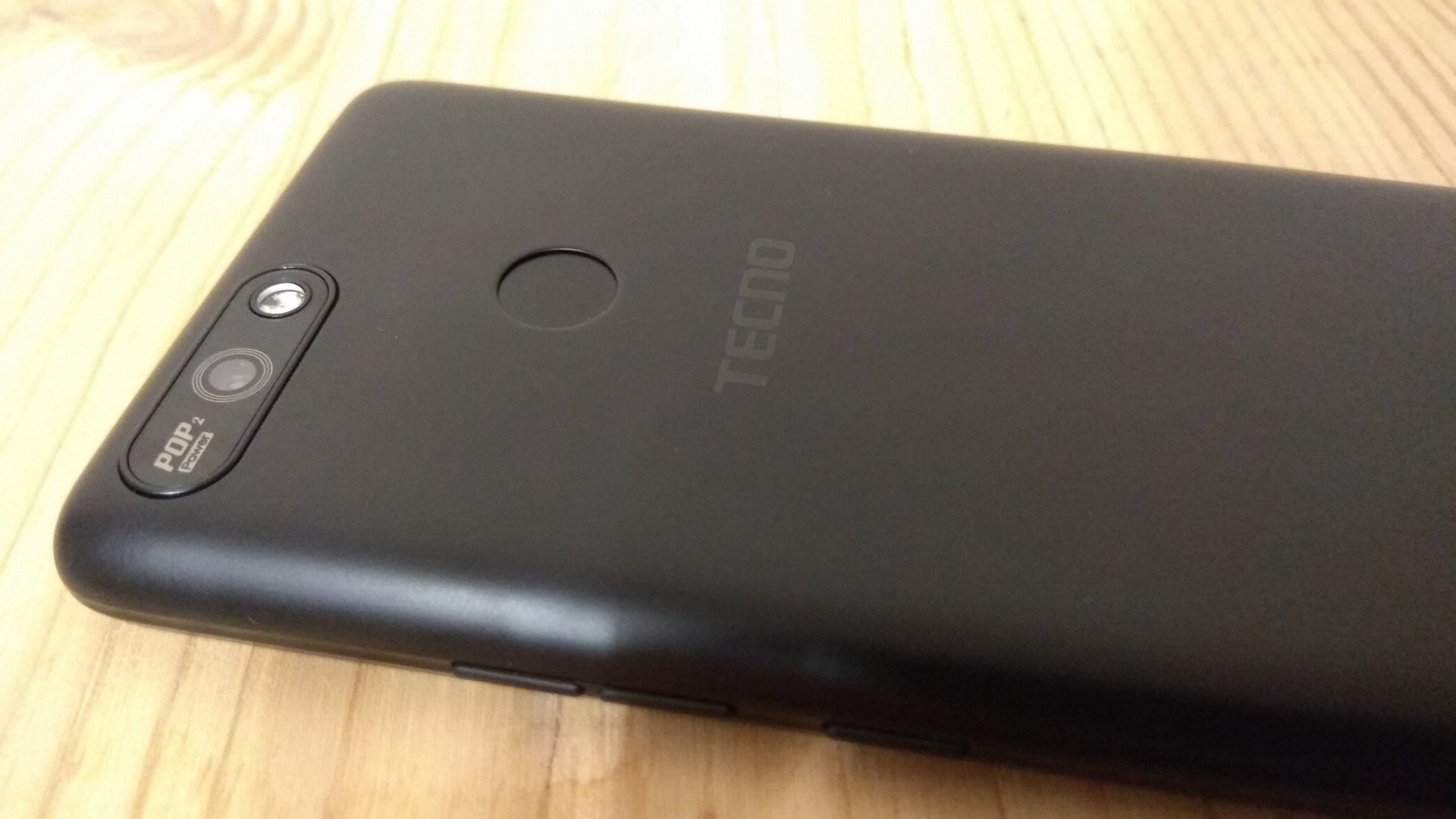 |
The consumption of RAM by the operating system and applications has also been reduced. At the same time, no more than four programs can run in the background, while in the full-functional version of Android their number is theoretically unlimited (in practice, with a conditional 6 GB of RAM, it can reach one and a half dozen). The decrease in the number and size of background applications has had a positive impact on the operating time of Go-smartphones without recharging and the consumption of Internet traffic (especially limited 3G/4G).
To learn more about our experience with Android Go and its apps, we'll use the Tecno POP 2 Power smartphone, which costs just $70, as an example.

Tecno POP 2 Power (also known as Tecno B1P) is one of the most affordable long-lived smartphones in domestic retail. Its battery capacity is an impressive 4000 mAh, which is one and a half to two times more than other solutions based on Android Go. And taking into account all the energy-saving features of this OS, the operating time without recharging in mixed use can reach three days. This smartphone also has a "younger brother" - Tecno Pop 2 8 GB / 1 GB with a 2400 mAh battery and $10 less.
The POP 2 Power screen has a diagonal of 5.45 inches and a resolution of 960x480 pixels, that is, an aspect ratio of 21:9 and a density of 197 PPI. Simply put, elongated screens have already reached ultra-low-cost smartphones, but the “bangs” are not yet available, which is why the frames at the bottom and top are wide by modern standards. But not the frames, but the TN-matrix is the main disadvantage of the display: the colors are dimmer compared to IPS, and when viewed at an angle they are inverted. In addition to the screen, you can also scold a smartphone for a rear camera of only 5 megapixels (even an 8 megapixel front camera), it’s good that they didn’t stint on autofocus and flash.
The “motor” of the POP 2 Power is a MediaTek MT6582 quad-core processor. Yes, it’s certainly not a “V-shaped figure eight”, in automotive slang, but with web surfing, chats, online video viewing and 2D games, four ARM Cortex A7 1.3 GHz cores and a Mali-400 MP2 graphics accelerator do just fine. Eight gigs of flash memory and one gig of RAM for Android Go is also enough.
In general, Tecno POP 2 Power, due to its low price and vice versa large battery, is a suitable candidate for the role of the first smartphone, such a “probe”. All the main functions are somehow implemented in it, including a fingerprint scanner and FM radio. So it will turn out to carefully test everything and draw balanced conclusions about what you want to improve in the future smartphone. Pleasant bonuses are separate trays for two SIM-cards and microSD, as well as a large set of accessories: a film on the screen, a silicone case and a wired stereo headset. By the way, all Tecno smartphones have an official 12+1 month warranty.
User experience
On top of Android 8.1 Oreo Go edition, the Tecno POP 2 Power smartphone has a proprietary HiOS graphical shell. In this case, this is not a bulky add-on, but rather just a theme in the same style for all Tecno Mobile smartphones. But it still has a number of small nice features compared to pure Android Go. When exactly the update to Android 9.0 Pie will take place is still not known exactly, but its lightweight Go version has already been announced by Google.
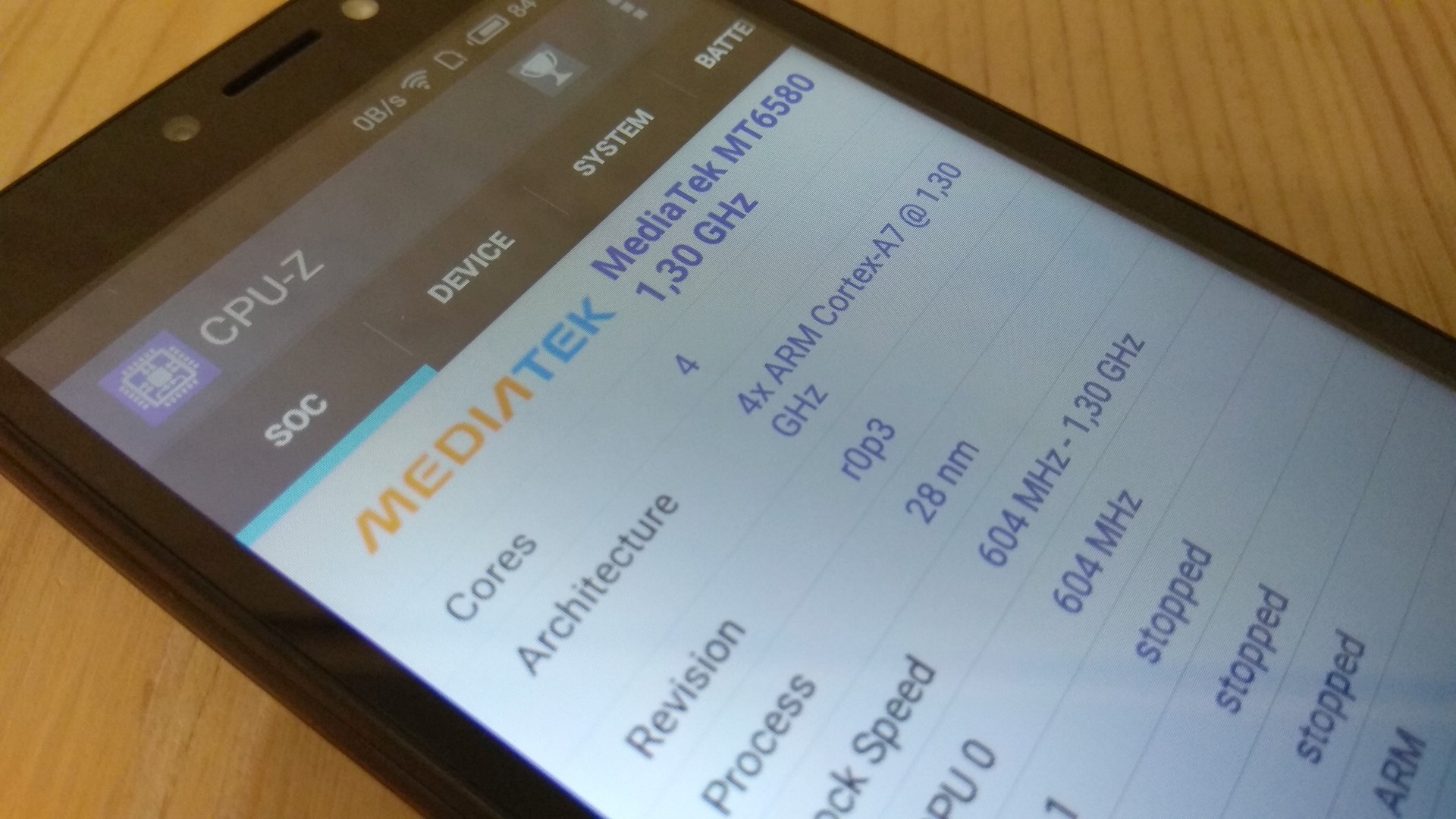 |
By default, less than the usual Google branded applications are pre-installed on the smartphone, again in order to save flash memory, some of them are marked Go, that is, lightweight versions. There are no cardinal differences in functionality between GMail Go and Google Maps Go. The only noticeable difference between the Go versions is a slightly less beautiful interface, evoking nostalgia for older versions of Android.
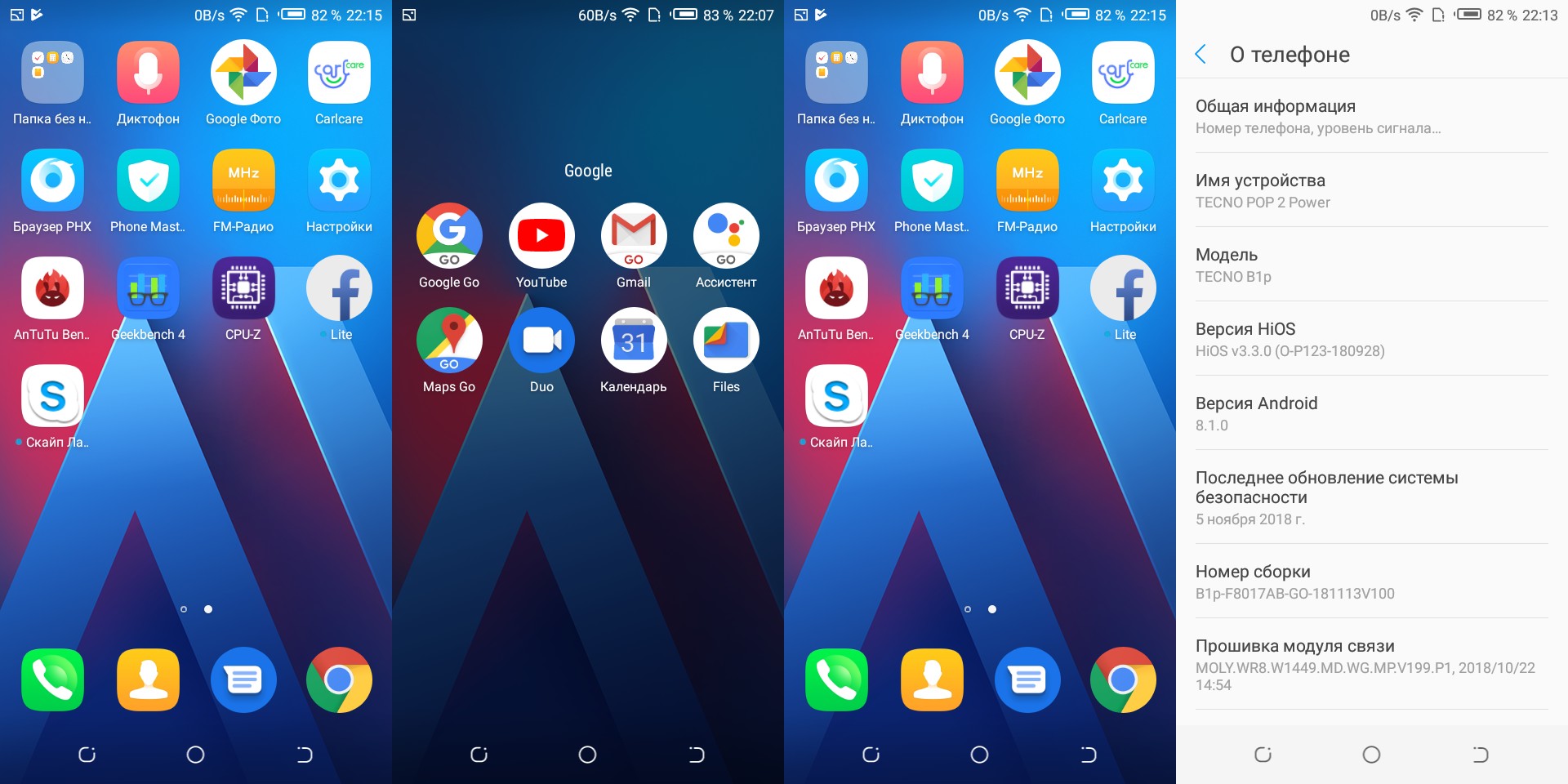 |
In turn, Facebook Lite and Skype Lite are more web applications than full-fledged programs. However, like it or not, you have to use them, since when you run these Internet services through a mobile web browser, the functionality is very limited. By the way, instead of the heavyweight Google Chrome, we recommend installing Opera Mini, which runs noticeably faster on a low-power processor.
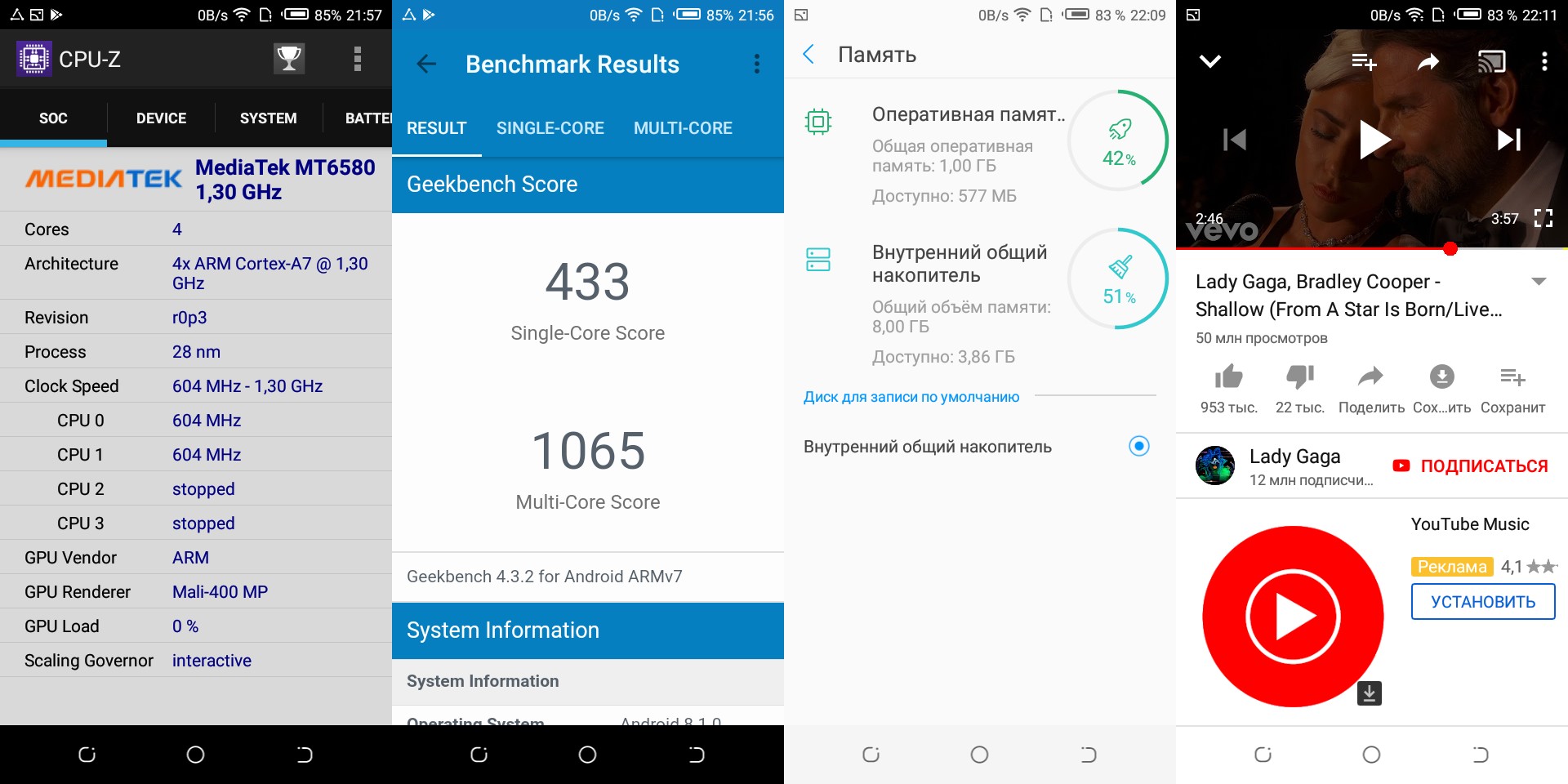 |
Application slowdowns or crashes with an error about lack of RAM on POP 2 Power are not observed. If you close all background programs, then about half of 1 GB of RAM will be free. Whereas the "adult" version of Android eats up two or even three times more (depending on the built-in graphical shell).
 |
The only problem was the inability to install some applications from Google Play, such as the popular AnTuTu benchmark. What exactly is the catch - a screen resolution below 720p, or an old, still 32-bit MediaTek processor - is not exactly known. Fortunately, unsupported applications on Google Play are rare.
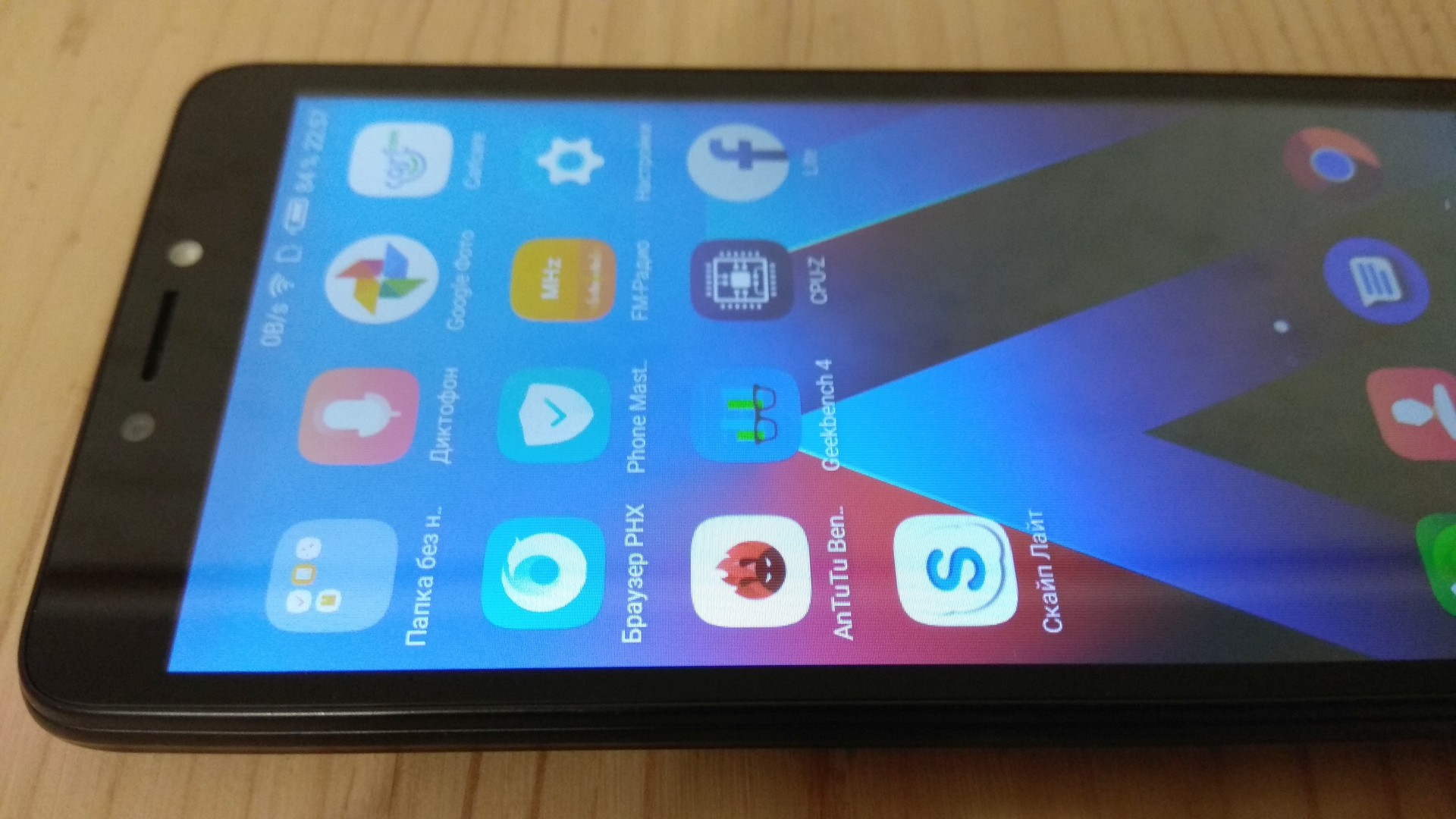 |
conclusions
It is really possible to fully use a smartphone with 1 GB of RAM in 2019 - confirmed in practice. Moreover, it cannot be called slow or single-tasking. Moreover, at times there was a feeling that Android Go on weak hardware was even faster than regular Android on smartphones with 2 GB of RAM (we recommend buying at least 3 GB). But the increased operating time without recharging is certainly beyond doubt. Not the least of this is the merit of lightweight Go and Lite versions of applications. Finally, we recommend reading our other article on a similar topic - “What games will run on a quad-core smartphone for $100?”.
Creatine supplements to improve performance during high-intensity workouts.
The most comfortable summer "shoes" for crossovers, SUVs and city SUVs in size 235/65 R18.
The main essential amino acids that act as a source of energy and muscle protectors.
Scales with a calorie calculator, a smart multicooker and a quartet of other smart kitchen assistants.
A selection of noteworthy "value seekers" for any wallet thickness.




































